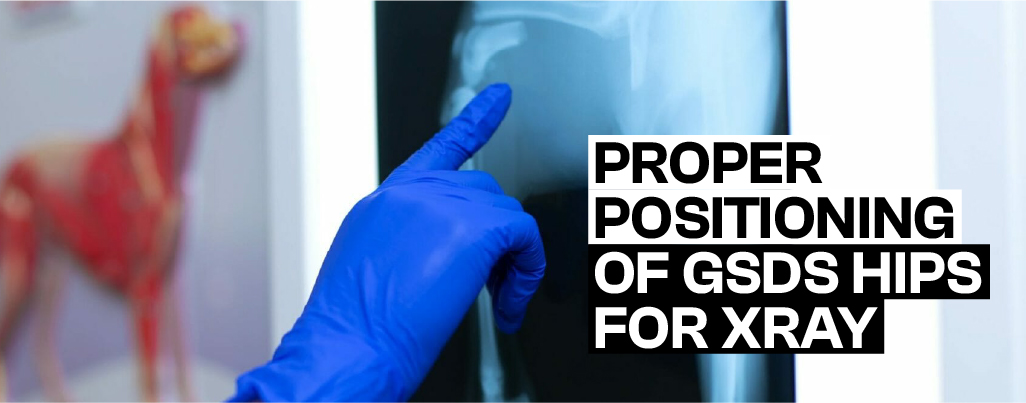
How can the precise positioning of a German Shepherd impact the accuracy of their hip X-rays?
Accurate hip X-rays are crucial for diagnosing hip dysplasia and other hip-related conditions in German Shepherds, a breed particularly prone to these issues. Proper positioning during the X-ray process ensures clear and reliable images, essential for making informed decisions about your dog’s health. Mispositioning can lead to unclear images, misdiagnosis, or the need for repeat X-rays, causing unnecessary stress for both you and your pet.
This post is about the importance of correct positioning, how to prepare your German Shepherd for the procedure, and what to expect afterward, ensuring the best outcomes for your beloved companion.
SUMMARY
- Learn how to properly position your German Shepherd’s hips for accurate X-ray images, including leg alignment and rotation.
- Steps to prepare your dog for a hip X-ray, ensuring their comfort and minimizing stress.
- Understand why correct positioning is crucial for accurate diagnosis and effective treatment planning.
- Get guidance on what to do after the X-ray procedure to ensure your dog’s comfort and monitor their recovery.
The Importance of Good Positioning on Canine Hip X-Rays
Proper positioning during hip X-rays is crucial for the health and well-being of German Shepherds.
1. Accurate Diagnosis
Proper positioning ensures accurate diagnosis by providing clear images of the hip joints. This clarity is crucial for identifying conditions like hip dysplasia, arthritis, and other abnormalities, enabling veterinarians to make informed decisions about treatment and management.
2. Minimizing Repeat X-Rays
Correct positioning minimizes the need for repeat X-rays. Mispositioned X-rays can result in unclear images, necessitating additional procedures that can be stressful for the dog and costly for the owner.
3. Reducing Stress for the Dog
Proper positioning techniques help reduce stress for the dog during the X-ray process. A calm, well-positioned dog is less likely to move, resulting in quicker and more efficient imaging.
4. Better Treatment Planning
Clear and accurate X-rays allow for better treatment planning. Veterinarians can more effectively determine the appropriate course of action, whether it’s medical management, physical therapy, or surgery.
5. Preventing Misdiagnosis
Good positioning prevents misdiagnosis by ensuring that the X-ray images accurately reflect the condition of the hips. Misdiagnosis can lead to inappropriate treatments, which may not address the
CALL Michael and Jeannette Today!
Get Elite German Shepherd Protection – Your Trusted Guardian Awaits!

Proper Positioning of German Shepherds Hips
Proper positioning of a German Shepherd’s hips for X-rays is crucial for accurate diagnosis and assessment of hip dysplasia or other hip issues.
Here’s a guide to ensure correct positioning:
1. Preparation
Ensure the German Shepherd is calm and relaxed. Sedation may be necessary for some dogs to keep them still during the procedure.
Ensure that the X-ray machine is calibrated and the table or positioning device is clean.
2. Positioning the Dog
The initial step in positioning the German Shepherd is to gently place the dog on its back on the X-ray table. This position, known as dorsal recumbency, is crucial for obtaining the most accurate view of the hip joints.
Ensure that the pelvis is in a neutral, straight position and that the legs are parallel to each other. This alignment is vital for a correct assessment. The hind legs should be carefully extended and rotated internally, which helps in achieving a clear view of the hip joints and surrounding structures.
3. Positioning Details
Achieving pelvic symmetry is critical for accurate X-ray results. Make sure the pelvis is aligned symmetrically, with the ischial tuberosities (the bony parts of the pelvis) positioned evenly. The spacing between the hind limbs should be equal to avoid distortion of the image.
The X-ray beam should be positioned perpendicular to the pelvis and centered over the hip joints to ensure a clear view of both the acetabulum (hip socket) and the femoral head (thigh bone). Positioning aids, such as sandbags or foam blocks, can be used to stabilize the dog and maintain the correct alignment, but they must be ensured that these aids do not obscure the area of interest.
4. Take Multiple Views
For a comprehensive evaluation, it is often necessary to take multiple X-ray views. The hip-extended view is the most common for assessing hip dysplasia, where the femurs are extended straight and rotated inward. This positioning allows for a clear assessment of the joint conformation and alignment.
Depending on the specific case, additional views, such as the ventrodorsal view or lateral view, might be needed to provide a thorough assessment of the hip joints and surrounding areas.
5. Post-Processing
After taking the X-rays, it’s important to review the images for clarity and accuracy. Check that the positioning is correct and that the images are clear enough to provide useful diagnostic information.
If any issues are noted or if the positioning appears incorrect, retake the X-rays to ensure the highest quality images. Proper review and post-processing are crucial for accurate diagnosis and treatment planning.
6. Safety Considerations
Safety is a key concern during the X-ray procedure. Minimize radiation exposure by using the lowest effective dose necessary to obtain diagnostic-quality images.
Protect both yourself and the animal from unnecessary radiation. By adhering to safety protocols, you can ensure a safe and effective X-ray process.
How to Read a German Shepherd Hip X-Ray?
Accurate interpretation of X-ray images can reveal crucial information about your pet’s joint health and guide appropriate treatment plans.
- Ensure both hips are symmetrical. Asymmetry may indicate issues.
- Check if the acetabulum adequately covers the femoral head.
- Look for uniform joint space; irregularities could suggest conditions like dysplasia.
- Identify bone spurs or irregularities indicating arthritis.
- Ensure the pelvis is properly aligned and symmetrical.
- Look for smooth, consistent bone density; irregularities may suggest health problems.
How to Prevent Bad Hips in German Shepherds?
To prevent your pet from having a bad hip posture, you need to follow some guidelines.
-
- Maintain a Healthy Weight: Keep your dog at an ideal weight to avoid extra hip stress; you can give them olive oil. Obesity increases the risk of joint issues and arthritis.
- Provide Regular Exercise: Engage your dog in regular, moderate exercise to strengthen muscles around the hips. Avoid excessive jumping or high-impact activities that can strain the joints.
- Feed a Balanced Diet: Offer a well-balanced diet with essential nutrients, including omega-3 fatty acids, which support joint health and reduce inflammation.
- Use Joint Supplements: Consider joint supplements like glucosamine and chondroitin to support hip health and maintain cartilage integrity.
- Regular Vet Check-Ups: Schedule regular veterinary check-ups to monitor hip health and address any issues early. Early intervention can prevent the worsening of conditions.
FAQs
How often should hip X-rays be performed for German Shepherds?
The frequency of hip X-rays depends on your dog’s age, health, and risk factors. Puppies may have initial X-rays to check for early signs of dysplasia, while older dogs may need periodic X-rays to monitor their condition. Consult your veterinarian for personalized recommendations.
Can poor positioning affect the diagnosis?
Yes, poor positioning can result in unclear or distorted images, leading to potential misdiagnosis or the need for repeat X-rays. Accurate positioning is essential for reliable diagnosis and treatment planning.
The Bottom Line
Proper positioning during hip X-rays is crucial for obtaining accurate and clear images, which are essential for diagnosing and managing hip issues in your German Shepherd. By following the outlined techniques and ensuring your dog’s comfort, you can help achieve the best possible results.
If you have any questions or would like to share your experiences with hip X-rays, feel free to leave a comment or reach out. Your insights and inquiries are valuable and can help others navigate similar situations.






